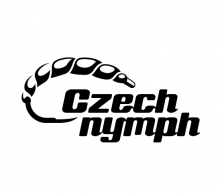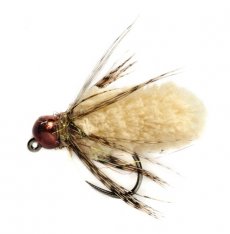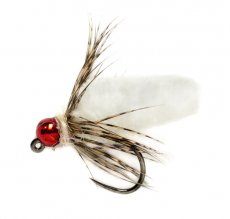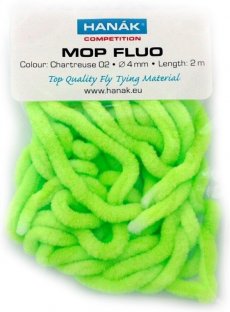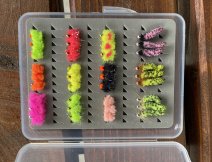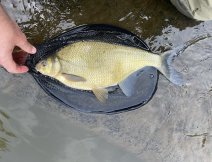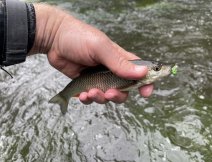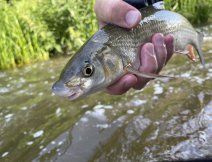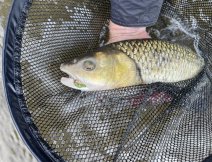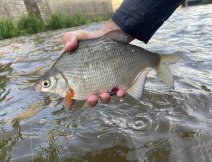All important information about MOP flies.
What are Mop Flies?
Mop flies are a type of fly patterns that have gained popularity in recent years due to their simplicity and effectiveness. They are made using pieces of microfiber mop strands (hence the name) as the main body material. These flies mimic aquatic insects, larvae, or other prey that fish find irresistible.
How to Fish Mop Flies
-
Techniques:
- Nymphing: Mop flies are often fished as nymphs, drifting them along the bottom of the water column. Use Euro nymphing techniques to detect strikes.
- Under an Indicator: Set up a strike indicator above the fly and adjust the depth so the mop fly drifts just above the bottom.
- Jigging: Use short, quick lifts of the rod tip to impart movement to the fly, mimicking an emerging insect.
-
Where to Fish:
- Rivers and Streams: Look for pools, runs, and riffles where fish are likely to be feeding. Mop flies can be used to catch the trout, grayling and coarse fish.
- Lakes and Ponds: Fish near structures, drop-offs, and weed beds where fish are hunting for food.
-
When to Fish:
- Mop flies can be effective year-round, but they are particularly useful during times when fish are feeding on larger prey items like larvae or caterpillars.
-
Tips for Success:
- Vary the retrieval speed and technique to find what triggers strikes.
- Use different colors and sizes to match the local prey and water conditions.
- Be patient and observant, adjusting your strategy based on the behavior of the fish and the water conditions.
How to Make Basic Mop Flies
Materials Needed:
- Hook: A size 10-14 jig hook is commonly used.
- Mop Chenille: This is the main material, typically from a microfiber mop.
- Thread: Use a strong tying thread.
- Bead Head (optional): Adds weight and helps the fly sink. Use tungsten bead or brass bead depending how much weight you need to add.
- Super Glue: To secure the materials.
Optionally you can use dubbing for tying the thorax and partridge or hen feather for front hackle.
Tying Tools Needed:
- Fly Tying Vise: To hold the hook securely.
- Scissors: For cutting materials.
- Bobbin: To hold the thread.
- Hackle Pliers: Optional, for better grip on materials.
- Whip Finisher: For finishing the fly.
Steps to Make a Mop Fly:
-
Prepare the Hook:
- Secure the hook in the vise.
- Slide a bead head onto the hook if you are using one.
-
Attach the Thread:
- Start the thread behind the eye of the hook and wrap it back to the bend, creating a base layer.
-
Attach the Mop Chenille:
- Cut a piece of mop chenille about 1 to 1.5 inches long.
- Place the cut end of the mop chenille on top of the hook shank and secure it with tight thread wraps. Make sure it extends backwards past the bend of the hook.
-
Build the Body:
- Wrap the thread back and forth to ensure the mop chenille is securely fastened.
- Optionally, you can add a drop of super glue to the tie-in point for extra durability.
-
Finish the Fly:
- Whip finish or use a half hitch to secure the thread.
- Cut the thread close to the hook.
- Optionally, add a small amount of super glue to the thread wraps for extra durability.
-
Trim and Final Adjustments:
- Trim any excess mop chenille or thread.
- Make sure the mop chenille is shaped nicely and looks appealing.
Mop flies are an excellent addition to any angler’s fly box due to their simplicity, versatility, and effectiveness. By following the steps to make them and using the appropriate fishing techniques, you can increase your chances of a successful day on the water.







